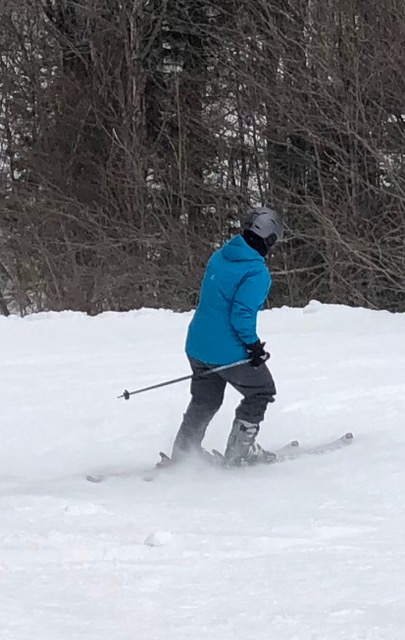
Choose Your Language:
Posted by: The Sumaira Foundation in NMO, Patient, Voices of NMO

It may seem strange, but Eleanor considers herself lucky. With her children still in high school, her elderly parents needing her care and working a full- time teaching job, Eleanor didn’t have much time to focus on feeling sick. However, in 2006, some of the odd symptoms she had been experiencing off and on came to a head when she felt increasing weakness in her hands and legs and developed a low-grade fever.
After stumping some of the best doctors in the best hospitals in the Boston, Eleanor was eventually diagnosed with Wegner’s Disease, a rare autoimmune disorder that causes inflammation of various tissues, most notably the kidneys and the respiratory tract, as well as pneumonia. She was discharged after two weeks of being hospitalized and treated with various medications. She never regained a sense of health. She wasn’t too sick to work, but she just didn’t feel right.
After a few years, Eleanor took her middle school class on their 8th grade four-day trip to Portsmouth. She began experiencing persistent and terrible tingling in her legs while on a day trip to the theater in Boston, but was unsure what was causing it. She helped drop the children back off and made her way to the hospital, where she lost all feeling from her waist down and on one side of her face. Eleanor knew that these were not typical symptoms of Wegner’s but she had been told that she had a rare form of the rare disorder and had no other answers.
While in the hospital, she was again administered many tests and had a large medical team learning from her experience and working hard to diagnose her symptoms as well as come up with a treatment. She tested positive for neuromyelitis optica (NMO). Eleanor had never heard of the disease. She took two months off of work and with the help of family medications and assistive technology, she learned to walk again. Her recovery was difficult and she was put on a 6-month schedule of Rituximab infusions. However, all of her symptoms disappeared entirely and she regained all feeling in her face and legs.
In 2010, Eleanor was hospitalized for pneumonia, but something didn’t feel right. On the day she was discharged, her children picked her up and took her out for dinner. At the restaurant, she began to feel a tingling in her chest. It was a surprising sensation that did not resemble her experience with pneumonia and when it became unbearable, they went right back to the emergency room.
Like her first attack, she walked into the hospital on her own but became paralyzed from the waist down upon being admitted. Eleanor’s second recovery followed a similar pattern to her first – she was given five days of Solumedrol, a walker, and few months of rehabilitation. She regained complete feeling from the waist down and was able to walk again.
For nine years now, on a regular schedule with Rituximab, Eleanor has not suffered another NMO relapse. Amazingly, after two violent attacks, she does not experience any residual symptoms. She does have weakness in her lungs and gets pneumonia pretty much every year, but NMO is not a defining feature of her life. In looking back on her two NMO attacks, Eleanor notes her naiveté; it never occurred to her that she may not walk again. It never even entered her mind. She pushed herself to regain ability. As a mother, a daughter of elderly parents, and a dedicated teacher, she HAD to carry on. As a woman who loves spending time with her friends and family with her toes in the sand and sun on her face, she WANTED to carry on.

As a child growing up on the shore, Eleanor was a beach girl. When she was first diagnosed with NMO, her brother could not believe that the first question she asked the doctor was,
“What does this mean for going to the beach?”
She couldn’t move her body; how could she possibly be worrying about the beach? Ha! Well, during her recoveries she limped down the beach, swam in the ocean and challenged her legs to improve.
Though she had been symptom-free for three years, Eleanor attended the Guthy-Jackson Charitable Foundation’s Patient Day in 2013 to meet others with NMO and learn more about the disease. She was astonished to see the havoc that NMO can inflict on bodies. She wonders how she could be so lucky. Was it the relatively rapid diagnosis? The luck of living in an area with some of the best doctors and hospitals? The right treatment? (Even though she has always remained with her nephrologist instead of transferring to a neurologist because they have a good and trusting relationship and the treatment is the same). Also, she still does have Wegner’s, but like her NMO it is in “remission”. Is there something about her body that makes it able to overcome these diseases?
Whether it is a combination of her positive attitude, her sense that she had no choice but to improve, her conviction that she would get better, as well as the right medical treatment happening quickly and effectively or some miracle in a seemingly compromised body, Eleanor will never know. What she does know is that she is one lucky woman who always has the beach.
As told to Gabriela Romanow in April 2019